|
|
:: [ A brief History of Andre Citroen and of the 5CV Citroen Model C ]
::
(Written
in 2001)
Part 1/. Brief History of
Bozi Mohacek's 1921 Citroen 5CV " L'Escargot "
Part 2/. Andre Citroen and his introduction to double chevron gears.
Part 3/. Andre Citroen and his connection with Mors and Munitions
Part 4/. Formation of the 'S.A. Andre Citroen' Car Company.
Part 5/. Brief History of the Model C 5CV Citroen
Part 3/. Andre Citroen and his connection
with Mors and Munitions
In 1908 Mors were in trouble. Emile and Louis Mors had commenced
manufacture of quality cars in 1895 and quickly established an enviable
racing reputation having vanquished the reigning Panhards by 1899. Mors
was a very innovative company and sales grew quickly fuelled by their
continuing racing successes including wins in the Gordon Bennetts of
1904 and 1905. However by 1908, the Depression had set in in France and
sales of Mors cars, which were generally large and expensive, dropped
dramatically. Mors withdrew from racing and even though the demand for
Mors cars was still there, production dropped to a low of 10 cars a
month.
In view of Andre Citroen's reputation for technical expertise in
mass production, Mors President Harbleisher invited Citroen to join Mors
and try to turn the company around. Citroen took leave of absence from
his gear business and brought with him Georges Haardt from the gear
factory. The Citroen style of management and production quickly began to
improve Mors' performance and he succeeded in reaching production of
2000 cars by the end of 1909. By 1913 the production was up to a level
of 100 cars per month and the Mors future seemed assured.
In the meantime Citroen's gear business was doing well in his absence
and, as his work at Mors was done, he returned to running his own
company. During the previous year, while still at Mors, he had been to
the USA and had inspected the Ford River Rouge plant in Detroit. Unlike
Mors where various departments were on different floors, the Ford plant
was all on one level with plenty of space and light. This convinced him
even more on the benefits of fluid mass production and he decided to expand
production at his gear factory even more. To finance the expansion he
went public in floating 'Societe des Engrenages A. Citroen'.
In the following year, 1914, the war began and Andre Citroen, who was a
captain in the Army Reserves, returned to the Army as a member of an
artillery regiment with 75 mm field guns. Early on, the regiment got a
pounding to which they could not respond due to a shortage of
ammunition. Citroen immediately spotted that here was a requirement and
an opportunity to mass produce shells in the same way as he had done
with gears. He quickly prepared a business plan which he submitted via
an old school friend Louis Loucheur, to the Minister for Armaments
Albert Thomas, who rapidly passed it on to the Army's Chief of
Artillery, General Baquet. The plan was accepted immediately.
The Ministry of Armaments swiftly supplied Citroen with funds to
purchase thirty acres of ground on the Quai de Javel in Paris on which in 1915
was rapidly constructed a massive lightweight factory complex.
The Ministry funds also covered the purchase all the requisite new
machinery from North America needed to produce 20,000 shells per day.
The Quai de Javel complex was massive, impressive, containing everything from
production lines to shops, 'cantine electrique', medical and dental
clinics, toilets, cloakrooms and all other facilities for employing more
than 12,000 workers.
Citroen was keen on worker benefits which not only
made him popular but also ensured stable production. As the war was well
under way and men were in trenches, the works were staffed mainly by
women, 'munitionettes', and Citroen paid special attention to a support
system for women covering pregnancy, birth, and paid leave
while nursing. By the height of the war, the Quay de Javel factory was
turning out more than 35,000 shells every day, and, in order to
integrate national ammunition production, other ammunition factories
producing a further 20,000 shells per day were placed under Citroen's
control; 55,000 shells per day. It was during this period that Citroen's
welfare interests were further nationally recognised in the introduction
of the concept of food rationing cards.
As the war drew to a close and the requirement for munitions started to
decline, Citroen began to look at other ways of utilising a fully
equipped precision manufacturing plant with enormous production
capacity. While it was probably inevitable that Andre Citroen would
remain within the automobile industry, he was not looking at the
automobile as a piece of artistic design nor a suitable means of
transport, but as a product with a mass market potential. Had there been
some other item which had more marketing potential and which could have
been built in his factory, then the Citroen Car might never have existed.
As it
was, the diminishing time frame, his previous experience at Mors and
meeting with Henry Ford led him in the direction of investigating
manufacture of automobiles. Citroen was not a designer nor knew much
about the workings of a car. For this he would need others. His was to
provide the concept, the production and the marketing.
It was as early as 1917 that Andre Citroen put out feelers as to who
could provide the designs for his car. The first to offer their services
were Artauld and Dufresne, who were working for Panhard and who provided
a design for a four-cylinder 3-litre 16 hp car. Citroen built three
prototypes which underwent extensive testing. It seems however that he
was not convinced by the size of the car, anticipating that mass
production would be better suited to a smaller more economical vehicle
which would appeal to the increasingly wealthy middle class. The
prototypes were sold to Gabriel Voisin who developed them further as his own.
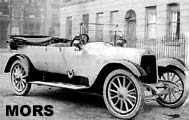 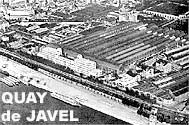
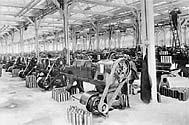
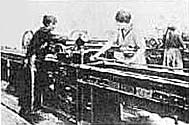
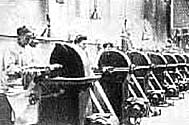

Continue
with Part 4/.
(Written
in 2001)
Copyright © MMI, Bozi Mohacek. Reproduction only
by permission from the Author.
Go
to Recent Venues Page
|